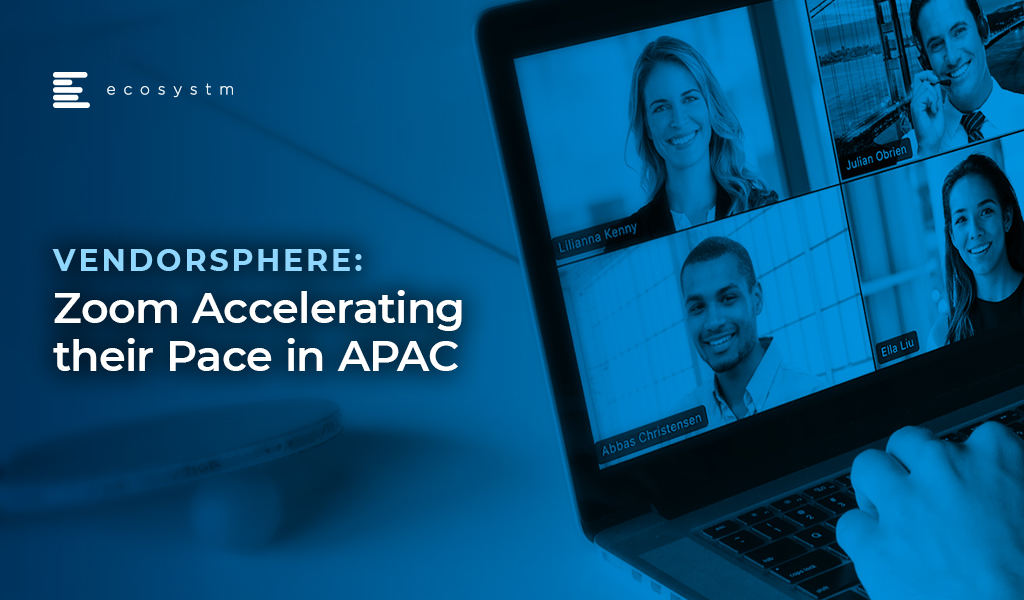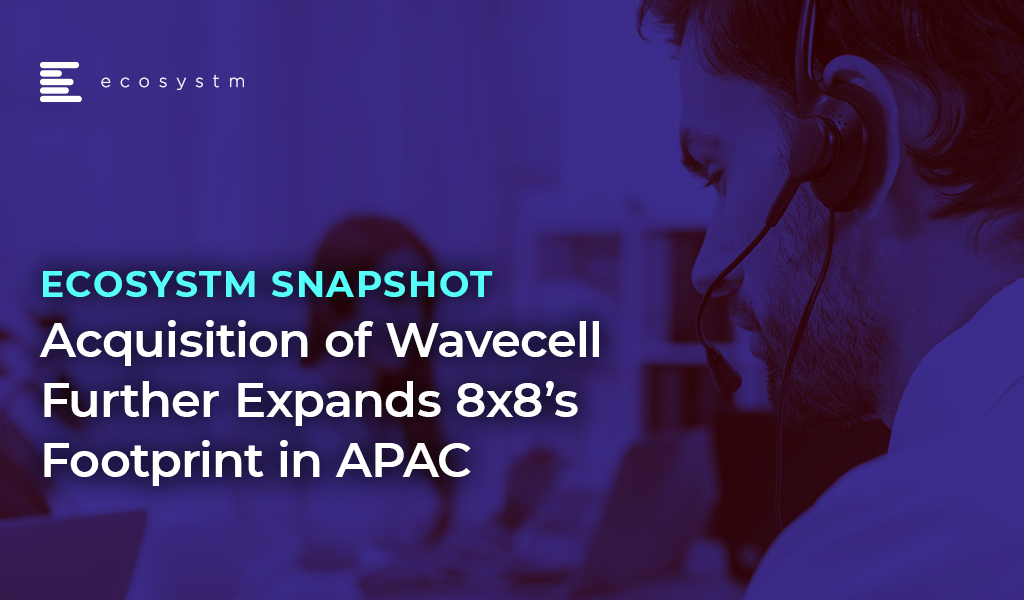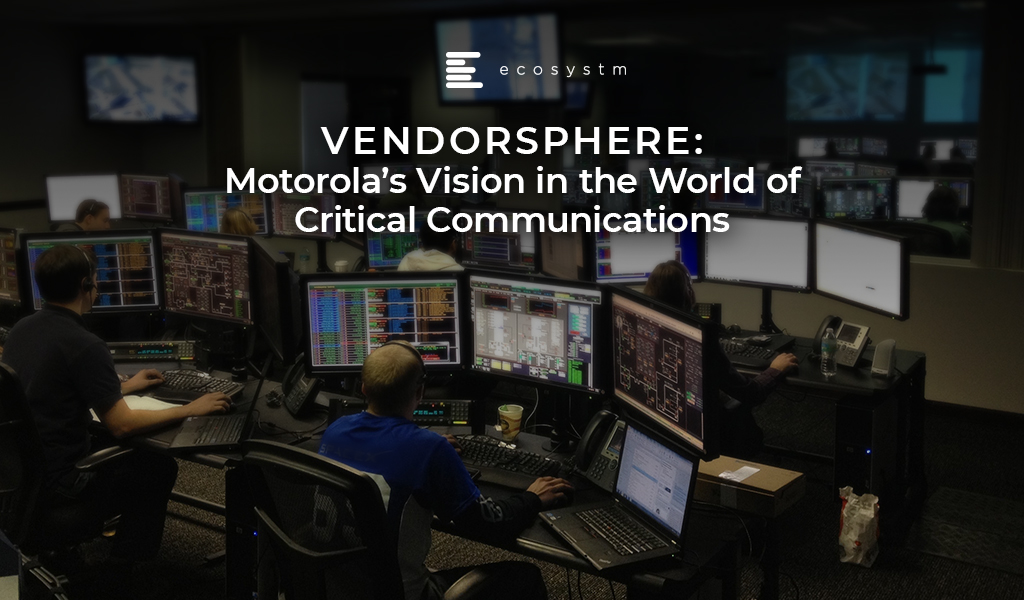Zoom is no stranger in today’s world of video and collaboration. Organisations would have heard of Zoom, trialled the product or are now users of the product for video collaboration. Zoom’s success is built on the simplicity of their technology and the ability of the solution to be deeply embedded within workflows. They have put some serious thoughts into user design and how that experience through the app or when launching the solution from the PC/ laptop allows for a smooth integration to email, calendars as well as other popular collaboration applications (including Slack). The market for cloud videoconferencing is growing rapidly. As the market shifts towards new and more agile ways of working and as co-working spaces rise globally, the need to collaborate and communicate instantaneously without too much hassle and interruptions will be critical. We are living in an era where it will be all about the experience.
Zoom’s share value has risen more than 120% from the $36 IPO debut price. Zoom has been focusing on building a base of high-value customers (those that spend more than USD 100,000 per year for services). In the last quarter alone the number of high-value customers went up by over 17%.
Rapid expansion outside of the ANZ region
Zoom has witnessed rapid growth in the ANZ region in recent years. Demand for the solution continues to come from both medium and large enterprises. Japan will be an important market for Zoom and they are starting to work with some big names in the market such as Rakuten and are expanding on growing their partner network. With a good data centre footprint which is critical for video and collaboration, other key markets for Zoom in Asia include India, South East Asia, Hong Kong and China. Their wins in these markets are from some of the biggest brands and conglomerates. Zoom’s growth in Asia is demonstrating how their cloud-based video solution is becoming the preferred platform, even if IT has already invested in other cloud video offerings. Demand is coming from the lines of business and not necessarily through IT. That is a big differentiator – Zoom being used by lines of business changes the entire sales process. It is now driven by word of mouth and individual user experience and LOBs which then becomes a companywide opportunity for Zoom. When you put that into context, the sheer numbers in terms of users within an organisation becomes large.
The launch of Zoom Phone
Zoom launched their Zoom Phone cloud phone service in Australia, supporting local phone numbers and PSTN access with new metered and unlimited call plans. Customers have the option of using their own carrier or using a Zoom number. The launch of Zoom phone should not be taken lightly by their competitors as they have so far succeeded in pulling customers to their app and impressing them with the user experience. Once the customer is locked into Zoom, the user experience has somehow led them to want to use it even more. With the launch of voice, they are now pushing themselves deeper into an account by creating upsell opportunities in workplace video, collaboration and voice technologies. This allows them to take on UC players across the stack of video, voice and collaboration.
Accelerating deep partnerships with leading cloud innovators
Zoom has strong partnerships with leading cloud platforms. Zoom’s partnership with Dropbox allows customers of both services to start a Zoom Meeting while viewing or working on shared files via shortcuts built into Dropbox’s viewer tool. The Atlassian partnership, for instance, allows Jira Ops to be integrated with Zoom. Users will be able to start a meeting directly from a Jira Ops ticket with anyone associated with the ticket. These are some of the partnerships and it demonstrates how Zoom has thought about other critical cloud apps that are important for day-to-day work and collaboration and the ability that can make Zoom the app that can provide that in-between integration for collaboration.
Ecosystm Comments
Zoom’s architecture is video-first, cloud-native and optimised to process and deliver high-quality video across devices. They reported recently that their approach to video has been uniquely different from that taken by others who have attempted to add a video to an aging, pre-existing conference call or chat tool. Zoom developed a proprietary multimedia router optimised for the cloud that separates content processing from the transporting and mixing of streams.
With the launch of Zoom Phone and the adoption they are witnessing of their video platform, Zoom is set to be a leading provider in video and voice collaboration. We can expect Zoom to further build on the office collaboration stack in the near future. As organisations start deploying solutions from cloud innovators such as AWS, Slack, Microsoft, Google and others, Zoom stands out from that standpoint. They are a cloud innovator that has thought about the issues of the past and the pain points of those using video. The thinking behind user design and simplicity and the integration to workflows has paved the way for the success they are seeing today.
As they grow their presence with some of the largest brands and Fortune 500 companies in the Asia Pacific region, they will also start attracting partners who will want to be part of that journey with them so it’s a win-win for both parties. These partnerships will include a range – from the existing players in the video to other workplace collaboration vendors.
For the fiscal year ended January 31, 2019, Zoom reported that 55% of their 344 high-end customers started with at least one free host prior to subscribing. These 344 customers also contributed to 30% of revenue in that fiscal year.
The journey has just started for Zoom in Asia Pacific and we can expect the next 12 months to be good for them as they expand rapidly across the region.
8×8 an enterprise communications player in the areas of voice, video, chat and contact centre solutions announced the acquisition Wavecell, a Singapore-based global Communications Platform-as-a-Service (CPaaS) provider last week. The deal is estimated to be for about USD 125 million in cash and stocks.
With this acquisition, 8×8 can leverage their CPaaS platform capabilities to enable companies to develop and embed communications features more easily. Enterprises can get direct access to pre-built features via Application Programming Interfaces (APIs) leveraging CPaaS. These APIs let developers pay for the services they need when building voice, video, chat, SMS, and web capabilities. By using a cloud CPaaS, developers can also eliminate lengthy development times and reduce time to market.
What does this acquisition mean for 8×8 in the Asia Pacific region?
- Establishes their presence in the rapidly growing CPaaS space. The CPaaS market is growing rapidly which includes key players like Twillio and Vonage. The Wavecell acquisition will allow 8×8 to offer a platform for providing SMS, messaging, voice, and video APIs globally to both enterprises and developers. Wavecell offers a complete CPaaS solution including a cloud API platform with SMS, chat apps, video interaction and voice APIs that enable mission-critical enterprise applications such as Application-to-Person (A2P) messaging, omnichannel customer journeys and multi-factor authentication at scale.
- Expands their footprint in the Asia Pacific region. With this acquisition, 8×8 will now have a good footprint in markets which includes Singapore, Indonesia, Philippines, Thailand, and Hong Kong. 8×8 is active mainly in the ANZ region. Wavecell has more than 500 enterprise including names such as Paidy, Tokopedia and Lalamove. Wavecell also brings an R&D centre in Asia which allows 8×8 to further accelerate growth in product innovation and delivery.
- Gives access to a large enterprise developer community. Wavecell have built a robust enterprise developer community over the past several years which has leveraged their API platform and software development kits. 8×8 can now enable application providers, enterprise developers, and customers to access and natively integrate their enterprise applications with 8×8’s voice, video and messaging services.
- Provides global coverage for multi-channel communications. Wavecell has established relationships with 192 network operators worldwide and business partners such as WhatsApp. Its carrier-grade infrastructure enables customers to share more than two billion messages per year across these channels. This global network enables Wavecell customers such as Lalamove, to use SMS to immediately notify customers of their ordering and delivery requests. The acquisition extends 8×8’s global carrier relationships and network support to hundreds of additional carriers, enabling 8×8 to further optimise their global service delivery for enterprise customers anywhere they operate around the world.
Ecosystm Comments
The CPaaS market is growing rapidly globally. Developers want to easily add real-time communication capabilities such as voice, video and chat apps through APIs with a faster time to market. The ability to do it easily and to be able to scale without a lengthy implementation cycle and at an affordable cost is becoming key. This acquisition will help 8×8 compete in the growing CPaaS market where players such as Twillio and Vonage are growing their presence rapidly.
The enterprise communications and contact centre segments are highly competitive spaces in Asia Pacific with several new entrants in the region in the last 18 months. These players, mainly from North America, offer strong capabilities in the areas of voice, video, collaboration and contact centres. 8×8 has been strong predominantly in the ANZ region. They have plans to open an office in Japan later this year. The Wavecell acquisition will help 8×8 expand and open doors for their core product offerings in South East Asia and Hong Kong. Wavecell’s large customer base of over 500 customers will give 8×8 an opportunity to upsell their enterprise and contact centre applications.
Some customers are still buying enterprise and contact centre technology from various vendors depending on who is the right vendor for voice, video, contact centre and other applications as opposed to working with one vendor for their end-to-end solution. 8×8’s advantage against some of their competitors is that they own the entire stack of their offerings. That has been important to some of their customers who have said that it has also benefited them from a security perspective. Most of their clients who have moved to their platform have done so due to scalablity, ease of implementation and fast deployment times.
This acquisition is definitely a step in the right direction for 8×8.
Critical Communications World, 2019 – TCCA’s largest event in global public safety communication – was held in Kuala Lumpur in June. Mission-critical communications are essential to maintaining safety and security across a range from daily operations to extreme events including disaster recovery. A UN report estimated that economic losses from natural disasters could reach USD 160 billion annually by 2030.
I attended the event as a guest of Motorola Solutions – one of the leaders in this field. Many people associate Motorola only with phones not knowing that they have been the cornerstone of some of the largest critical communications deployments around the globe. For instance, Victoria Police completed its AUD 50M+ rollout of Motorola Solutions managed services, enabling almost 10,000 police officers across Victoria access to mobile devices loaded with smart apps, and data when and where they need it most.
Motorola’s ability to provide customers with a private network which is secure, robust and redundant in the event of disaster has also been one of the reasons for their success in the industry. In the event of natural disasters or terrorist attacks, situations can arise where networks will not be available to send and transport any information. Having a secure and private network is critical. That explains why some of the largest police departments in Asia work with Motorola and these include Singapore, Malaysia and Indonesia.x
Motorola acquired Australian mobile application developer Gridstone in 2016 and Avigilon, an advanced video surveillance and analytics provider in 2018. These acquisitions demonstrate how Motorola is innovating in the areas of software, video analytics and AI.
Key Takeaways:
Public Safety Moving to a Collaborative Platform with AI and Machine Learning
Andrew Sinclair, Global Software Chief for Motorola Solutions sees AI enhancing future command and control centres and allowing greater analytics of emergency calls. Call histories and transcriptions, the incident management stack, community engagement data and post incidence reporting are all important elements for command and control centres. Using AI to sieve through the information will empower the operator with the right data and to make the right on-the-spot decisions.
The Avigilon acquisition, enhances Motorola’s AI capabilities and less time is spent monitoring videos, giving first responders more time to do their jobs. The AI technology can make “sense” of the information by using natural language technology. For example, if asked to find a child in a red t-shirt, the cameras can detect the child and also create a fingerprint of the child. The solution enables faster incidence detection by using an edge computing platform. It gathers the information and processes it to relevant agencies making the search operation faster and more streamlined. The application of AI in the video monitoring space is still in its early days and the potential ahead for this technology is enormous.
The other area that can empower first responders better are voice activated devices. The popularity of Alexa and Echo in the consumer world will see greater innovation in the application of public safety solutions. For example, police officers responding to an emergency may have very little time to look at screens or attend to other applications that need touching or pressing of a button as time and attention is essential is such scenarios. The application of voice activated devices will be critical for easing the job of the police officer on the ground. This will not only save administrative work on activities such as transcription, but also help in creating better accounts of the actual happenings for potential court proceedings.
While it is still early days for a full-fledged AR deployment in public safety, there are potential use cases. For example, firemen standing outside a building to make sense of the surrounding area could use AR to send information back to the command and control centres.
The Growth of Cloud-driven Collaboration
Seng Heng Chuah, VP for Motorola APJ talked about the importance of all agencies in public safety to be more open and collaborative. For instance, currently most ambulance, police and fire departments work in silos and have their own apps and legacy systems. To achieve the Smart City or Safe City concept, collaborating and sharing information on one common platform will be key. He talked about the “Home Team” concept that the Singapore Government has achieved. Allowing all agencies to collaborate and share information will mean the ability to make faster decisions during a catastrophe. Making “sense” of the IoT, voice and video data will be important areas of innovation. Normally when a disaster happens, operators at command and control centres – as well as onsite staff – face elevated stress levels and accurate information can help alleviate that.
The move towards the public cloud is also becoming more relevant for agencies. In the past there was resistance and it was always about having the data on their own premises. In recent years more public safety agencies are embracing the cloud. When you have vast amounts of data from video, IoT devices and other data sources, it becomes expensive for public safety agencies to store the data on premise. Seng Heng talked about how public safety agencies are starting to “trust’’ the cloud more now. According to him, Microsoft has done a good job in working with local governments around the world, and their government clouds have many layers of certifications as well as a strong data centre footprint in countries. The collaboration between agencies and more importantly agencies embracing the cloud will drive greater efficiency in analysing, transcribing and storing the data.
The Rise of Outcome-based, Services-led Opportunities
Steve Crutchfield, VP of Motorola Solutions for ANZ, talked about how Motorola is a services-led business in the ANZ market. 45% of Motorola’s business in ANZ is comprised of managed services. The ANZ region is unique as it is seen as early adopters and innovators around public safety implementations. Organisations approach Motorola for the outcomes. Police and Ambulance for example in the state of Victoria use their services on a consumption model. Customers across Mining, Transportation, and Emergency Services want an end-to-end solution across the network, voice, video and analytics.
The need for a private and secure network is significant in several industries. In the mines, safety is of priority and as soon as the radio goes down it impacts productivity and when production stops that can results in huge losses for the mines. Hence the need for a reliable private network that is secure for the transportation of voice and video communication is critical.
Crutchfield talked about how the partner ecosystem is evolving with Motorola working with partners such as Telstra and Orion but increasingly looking for specialised line of business partners and data aggregation partners. Motorola works with 55 channel partners in the region.
Ecosystm Comment:
Motorola Solutions is an established player in providing an end-to-end solution in the critical communications segment. The company is innovating in the areas of software and services coupled with the application of AI. Dr Mahesh Saptharishi, CTO at Motorola Solutions talked about how AI will eventually evolve into “muscle memory”. That will mean that there is far greater “automatic’’ intelligence in helping the first responders make critical decisions when faced with a tough situation.
In the end the efficacy of critical communications solutions will not just be the technology stack, but the desire and ability for cross-agency collaboration. As public safety agencies analyse large volumes of data sets from the network right to the applications, they will have to embrace the cloud, and which will help them achieve scale and security when storing information in the cloud. From the discussions, it was clear that the public safety agencies have started acknowledging the need to do so and we can expect that shift to happen soon.
Motorola will need to keep evolving their channel partner model and start partnering with new providers that can help in delivering some of the end-to-end capabilities across Mobility, AI, software, analytics and IoT. Many of their traditional partners may not be able to be that provider as the company evolves into driving end-to-end intelligent data services for their clients. The company is playing in a unique space with very few competitors that can offer the breadth and depth of critical communications solutions.
I was invited recently by NEC to attend their briefing where Walter Lee, their Evangelist and Government Relations Leader presented to analysts and journalists about how they are winning large contracts across various sectors in the areas of biometrics and surveillance. Biometrics is not just used as a way to drive greater security, but is also helping increase speed in processing times, reducing waiting period in queues and used as a way to drive efficiency and reduce costs which was highlighted by Lee through the various projects NEC had won recently.
NEC’s Artificial intelligence (AI) engine, NeoFace’s strength lies in its tolerance of poor-quality images. The NeoFace solution can match images with low resolutions down to 24 pixels between the eyes and this has allowed it to demonstrate the matching accuracy which is hard to achieve for most vendors offering Facial Recognition solutions. It is its ability to work across various challenges around low resolution, light and images that has allowed NEC to be one of the leading suppliers of Facial Recognition solutions globally.
Key Case Studies Presented
In 2018 Delta Airlines launched the first ‘biometric terminal’ in the US at the international terminal in Atlanta’s Hartsfield-Jackson airport. The biometric push according to Lee replaces tickets and customers now check in by using their face. The system recognises their face and they are checked in. Customers no longer need to use their passports to get through checkpoints around the airport. Lee emphasised on how it takes 9 minutes to board an international flight. Apart from driving identification and security, this use case highlights how airports around the world can increase efficiency in their overall check in and boarding processes at airports. Other core benefits derived from this implementation include better security for border control, seamless service, speed of boarding (savings of 9 minutes per flight). Privacy issues were addressed with regards to where the data was residing and how long the data would be kept for and in this case the data was kept for only 24 hours.
According to the global Ecosystm AI study of current and planned Facial Recognition adoption by industry, the transportation industry is leading the number of deployments globally.
Adoption of Facial Recognition by Industries
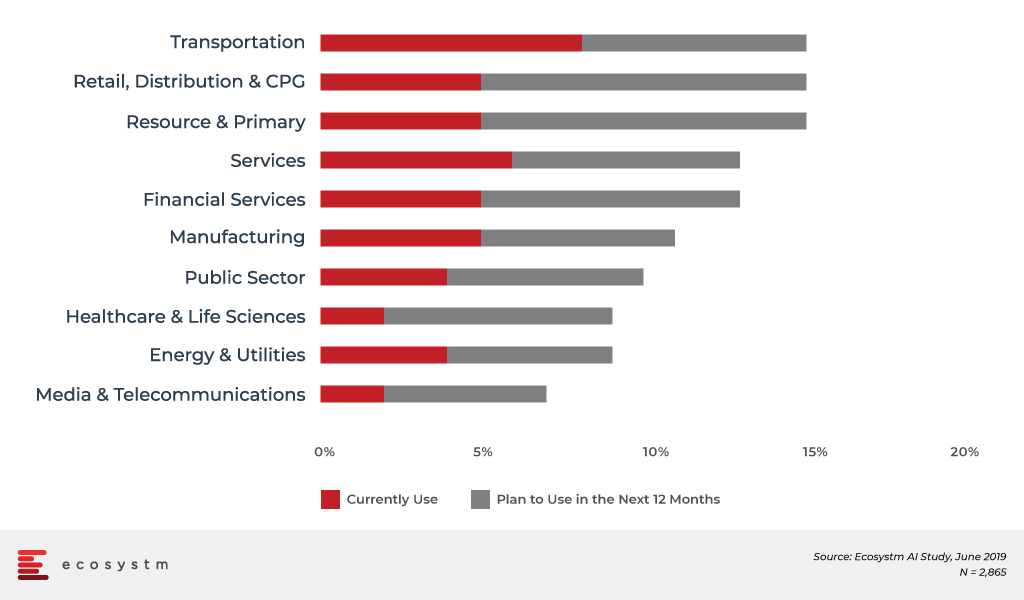
Another case study presented is the upcoming 2020 Summer Olympic and Paralympic Games in Tokyo., for which NEC will provide the Facial Recognition solution. The solution will be used to identify over 300,000 people at the games including athletes and officials. It is the first time that Facial Recognition technology will be used for this purpose at an Olympic Games. The NEC solution will allow the matching of tens of thousands of faces in a nano second according to Lee.
The Tokyo 2020 implementation will involve linking photo data with an IC card to be carried by accredited people. NEC says that it has the world’s leading face recognition tech based on benchmark tests from the US’s National Institute of Standards and Technology (NIST).
Ecosystm Comment.
NEC has years of experience in biometrics and Facial Recognition. Not many vendors have solutions that can capture vast amounts of images in a nano second. Their solutions are used by some of the largest organisations in the world. NEC has also perfected the art of handling low resolution images which if not analysed accurately can lead to unintended consequences. The ability to process low resolution images with speed and accuracy is not something that is easily achievable. Security and the rise of terrorism are some of the needs as to why Facial Recognition is important. Additionally, speed and efficiency in administrating passenger boarding at airports whilst ensuring that the security and identity checks have been made is important. The Delta Airlines case study is a great example of how there can be a savings of 9 minutes per flight. NEC continues to gain traction in the market and the Ecosystm AI study has them as one of the top vendors being evaluated for planned implementations for Facial Recognition globally.
The benefits of Facial Recognition solutions are huge – however there must be greater scrutiny around the possible outcomes of AI. Whilst regulation on AI is still at its infancy, 2019 and 2020 will see greater scrutiny and regulation around AI implementations. These will be directed towards protecting individual’s data but also there will be greater emphasis on addressing issues around privacy, ethics and bias in AI implementations. Feeding the machine with the right data (unbiased and ethical) and measuring the various outcomes before the project goes live must be looked at with greater diligence.
2 weeks ago, San Francisco became the first US city to ban the use of Facial Recognition technology by the police and local government agencies. One of the reasons for the ban was with regard to bias. When designing the systems, if technology specialists feed the wrong information for example recognising only a certain skin colour, then the problem of making the wrong and unwanted assumptions start arising. The ecosystem of players in the AI industry ranging from government, academia right down to vendors have a greater role to play in ensuring ethics and bias issues are addressed from the onset of the project. There are consultants in the market as I highlighted in my recent Ecosystm report, that prepare companies for the impact of ethics, fairness and bias. We can expect more of such consultancies and specialist agencies to grow in the market.
NEC has taken this into consideration and published a set of principles for the application of biometrics and AI. The “NEC Group AI and Human Rights Principles” will guide the company along the lines of privacy and human rights. These initiatives were led by the Digital Trust Business Strategy Division, in collaboration with several other divisions within the company, as well as industry stakeholders including industry experts and non-profit organisations.
I recently attended the Verint Engage event in Sydney, which had over 700 attendees. Conversations on artificial intelligence (AI) and analytics garnered a lot of attention this year. Verint showcased the deployments of intelligent conversational bots used by some of the biggest brands in Asia Pacific. Some of these customers include Spark NZ, Suncorp and AAMI. In 2018, the company acquired Next IT, a provider of conversational AI virtual assistant, to accelerate their move in the automation and analytics space. Verint’s choice of Next IT was driven by the need to provide their customers with a solution that has deep expertise in the contact centre space and to have an automation solution that is deeply integrated into their broad portfolio of solutions.
Last week, Verint announced the launch of AI Blueprint, a conversation analysis system that identifies intelligent virtual assistant (IVA) use cases and accelerates automation. The solution then delivers a “blueprint” of precisely how businesses can get started with AI or continue to grow their AI capabilities.
Verint is no stranger to the contact centre market and has an established presence in areas of quality monitoring, analytics, knowledge management and compliance.
Key Takeaways from Customers on Intelligent Virtual Assistants:
- Engaging senior stakeholders. For a successful deployment, many organisations had to involve senior management in the discussion. These ranged from CIOs, CDOs and CEOs. The conversation around automation and AI for customer service is no longer contained within the contact centre. Many organisations spoke about having senior management involved in the pre and post launch of the virtual assistant deployment. Getting buy-in and feedback from senior management is key as the AI discussion forms part of a broader digital strategy for the organisation. The global Ecosystm AI study, which is live and ongoing, also finds that senior management is the second highest influencer for AI procurement and implementations.
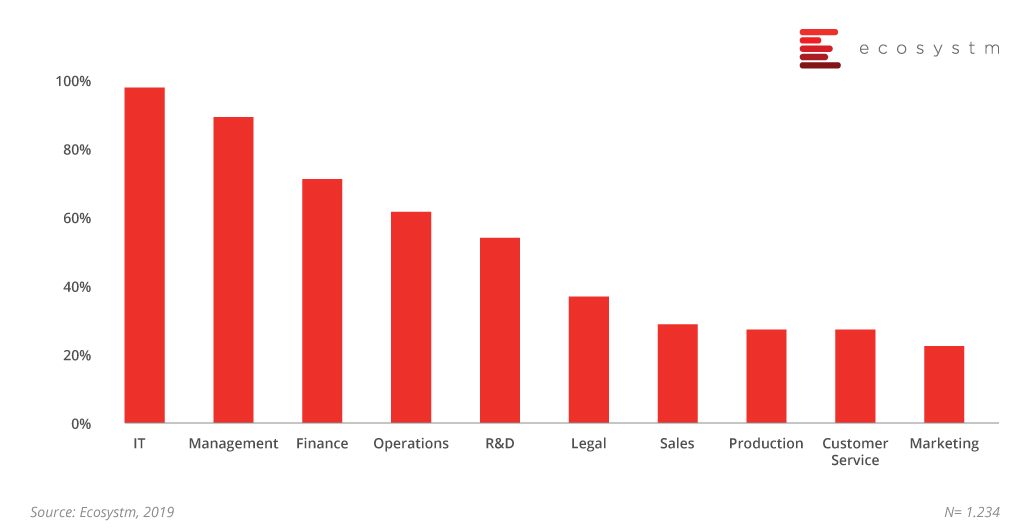
- Integrating Knowledge Management to the AI deployment is important. Organisations at the Verint Engage event highlighted that the route to a successful intelligent virtual assistant deployment is to embed knowledge management capabilities into the AI platform. By failing to incorporate knowledge management, the intelligent virtual assistant experience will be poor, leaving customers frustrated.
- Working with a vendor that understands contact centres is key. Some of the customers at the event had worked with other well-known brands AI in the market prior to working with Verint. They moved to Verint primarily for two reasons. One was that the cost of deployment was less on the Verint platform and secondly, they wanted to work with a vendor that not only understood AI but that had a deep understanding of the contact centre environment. Compliance, training, speech analytics, coaching and quality monitoring are core capabilities of Verint’s portfolio. These are important elements in the overall deployment of AI.
- Striking the right balance between automation and voice. Several of the organisations highlighted the savings realised, when the deployment was done well and fully integrated into knowledge management. Automation will in the long run help reduce contact centre calls and live chat costs. However, it was emphasised that the agent or human element remains important and cannot be ignored. The seamless hand off to the agent when the query cannot be answered is important.
Ecosystm Comment:
Virtual assistants need to be fed with the right information to make the discussion with the customer engaging. A solid knowledge management strategy is key to the success of a virtual assistant deployment. Without analytics and knowledge management integrated into AI, the CX will be poor leaving customers feeling frustrated. When deployed well, the virtual assistant can help answer most of the queries due to a structured knowledge bank with detailed FAQ. The ability to have it updated regularly and in real time is critical. It is important for contact centres to not rely on full automation within the contact centre.
Verint is starting to win deals in the AI and virtual assistant space with some of the largest brands in Asia Pacific. Some of the customers include those from the financial services sector. Verint’s success is not just in the intelligent virtual assistant market. It is their ability to deliver an all-encompassing solution across self-service, analytics, knowledge management, quality monitoring and compliance.


